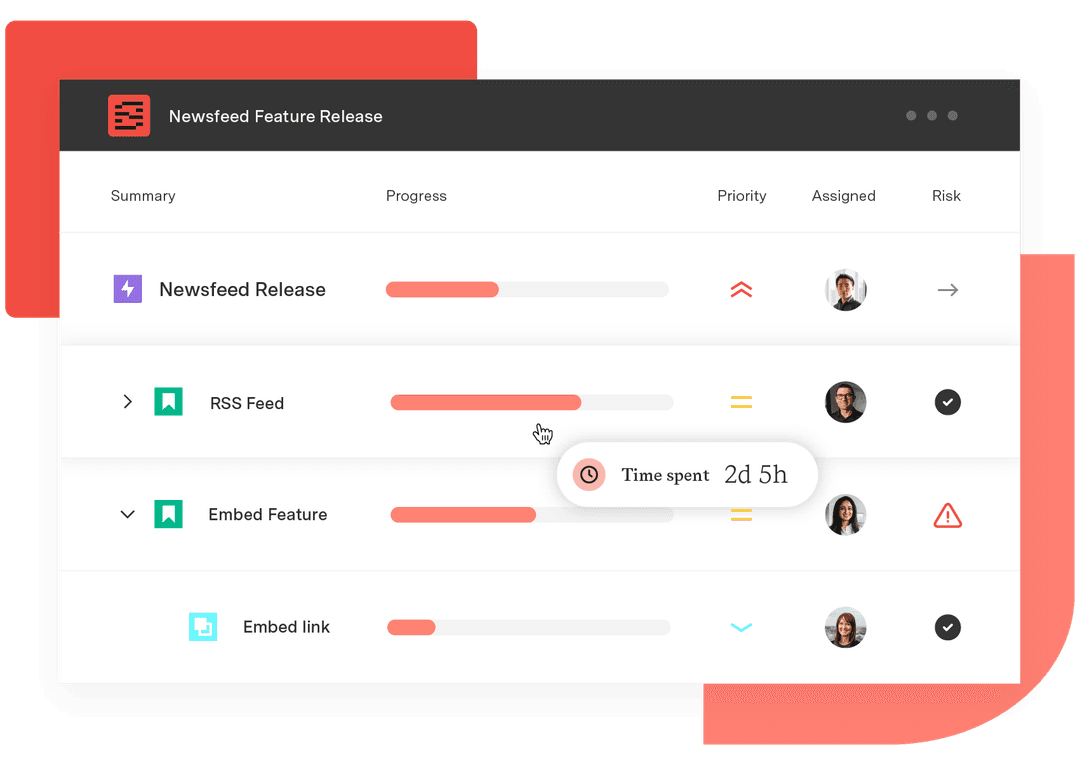How to be an Agile at Scale leader
Tempo Team
Agile organizations pride themselves on the independence and adaptability of their teams. It requires a system of empowered workers, owning their own processes and staying in constant communication with each other. That raises a key question: Where do leaders fit in a self-organizing team?
With hurdles constantly appearing, communication issues killing productivity, and objectives clashing, leaders are still essential in an agile workplace. This is only increased when we start to think about Agile at Scale, where we need to develop hierarchies on top of non-hierarchical team structures.
Leaders need to embody agile values and principles and take on a new kind of role: One of an individual embedded within a team to support its goals rather than dictating where to go from above.
Here’s how to go about it:
The roles of leadership in Agile at Scale
Serving the team
Sometimes referred to as “servant leadership,” this is a common kind of role for an Agile at Scale leader.
Their main function is getting everyone organized, on task, and keeping communication flowing with daily stand-ups or sprints.
You need to encourage transparency both from those above and around you so everyone feels respected and their pain points are known. Prevailing with Agile at Scale starts with respect for all points of the working process, not just hearing feedback before the final sign-off.
Providing clear strategic direction
While agile teams should have the autonomy to decide how they work, leaders still need to provide a clear strategic direction. This includes setting the vision, aligning the organization around strategic goals, and ensuring that all teams understand how their work contributes to these goals.
You are succeeding as an agile leader when everyone knows their goal, agrees it is the best way to get the job done, and how that goal relates to overall objectives. However, teams also need to know where their work ends so they are protected from taking on more than they can handle.
Removing obstacles
Embracing agile principles comes with challenges such as resistance to change, poor communication between teams and individuals, and unfamiliarity with new tools.
Agile at Scale leaders need to be on the lookout for silos developing and push for daily communication between all groups. You need to push for daily communication between individuals and teams so everyone is informed of the progress of others and not just management.
However, sometimes the biggest obstacle for agile teams can be the leader themselves. It can be easy to fall back into old methodologies and want full control over your team and what they are doing. Without that trust and respect, agile cannot succeed at any scale.
Make sure you don’t become the biggest obstacle for your organization's success.
Sign up for a demo
RegisterEncouraging continual improvement
Agile leaders should foster a culture of continual improvement. This means regularly reflecting on the organization's agile practices and looking for ways to improve. Leaders should encourage their teams to do the same and be open to feedback and suggestions from all levels of the organization.
Part of this mindset of continuous improvement means investing in agile training, education, and new tools. They should keep up to date with the latest agile practices and trends, and ensure their teams have access to the resources they need to be successful.
Measuring and rewarding agility
While there is no single way to measure agility, you can always strive to collect more feedback and acquire data on your efficiency and effectiveness towards your objectives.
Get the tools you need to measure your time to market, customer retention, defect rate, or whatever the relevant metric for your industry might be. See how these things are changing and make sure your team knows where they can improve and celebrate when things are on track.
Getting it right and seeing your metrics tell the tale of your organization’s success is always a cause for celebration, and if you want your team to keep it up you need to pat them on the back. This is even more important if your work is purely iterative and there is no solid end-state for projects.
In summary, the role of leadership in Agile at Scale is multi-faceted. Leaders must not only manage and guide their teams, but also serve as role models, fostering an environment that supports Agile principles and values.
However, being an agile leader is not a zero-sum game where you are either successfully agile or a failure. Agile is itself an ever-evolving process that iterates and develops and, therefore, so is being an agile leader. Your goal is to keep generating better outcomes with less time wasted by a happier and better-functioning team.
If you are looking for how to foster better collaboration or get more accurate insights for your agile teams, look no further than Tempo. We offer integrated applications for time management, resource planning, budget management, strategic roadmapping, and more.
For more resources like this visit Agile at Scale.














































